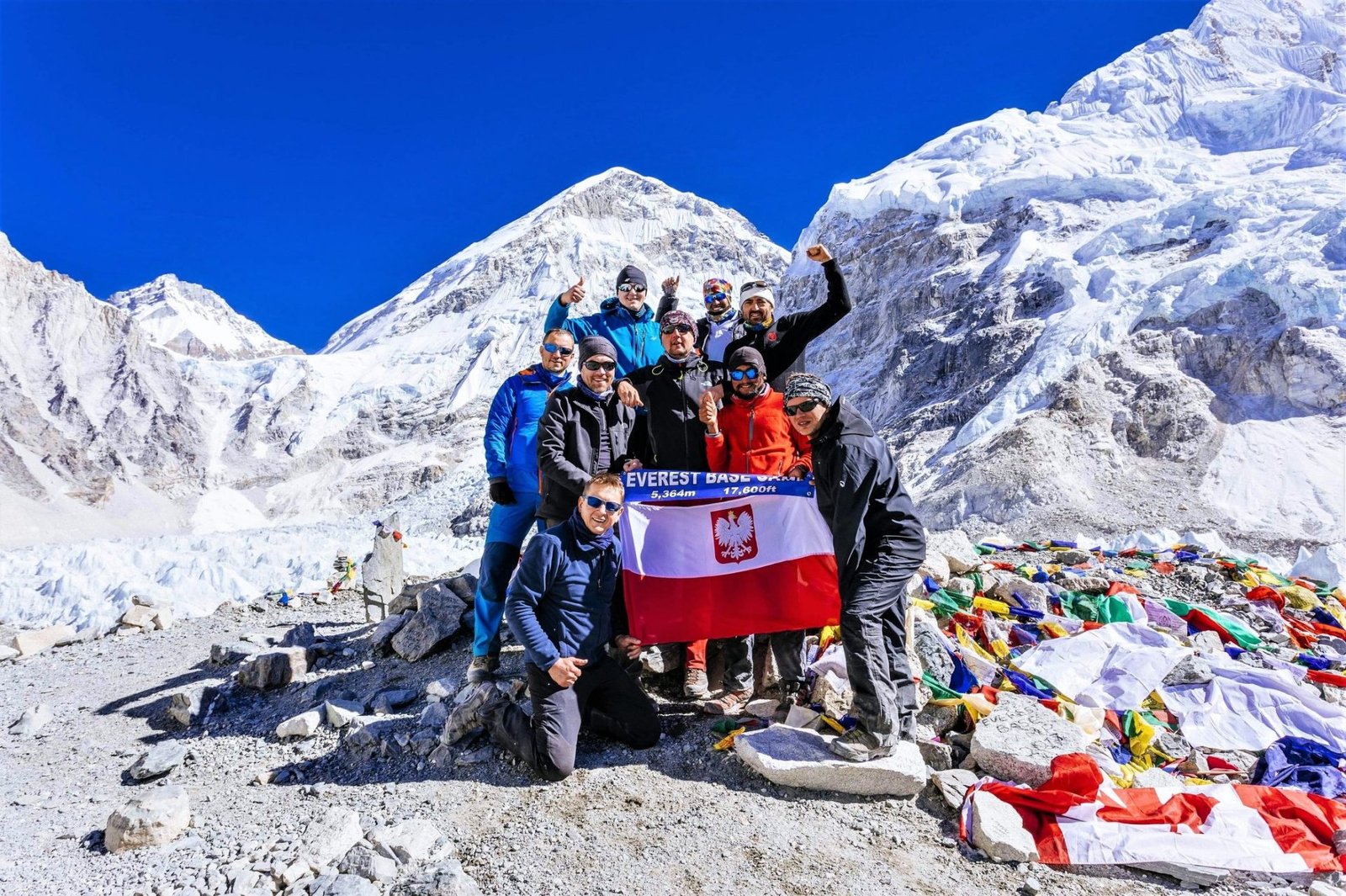Climate Cues: Weather Patterns and Temperatures at Everest Base Camp

Executive Summary

Everest Base Camp offers intricate and diverse climatic patterns, crucial for understanding high-altitude weather and climate dynamics. This article comprehends temperature and weather conditions at Everest Base Camp, influenced by elevation, latitude, topography, and seasonality. Predictive modeling employed by experts facilitates safeguarding expeditions by understanding climate patterns, extreme events, and potential risks. Early ascents encountered unforeseen challenges, with subzero temperatures rendering oxygen thin and wind chills plummeting to alarming levels. However, scientists have enabled climbers to better gauge weather and plan expeditions accordingly.

Introduction
The allure of Mount Everest, the world’s highest peak, attracts mountaineers seeking to conquer its formidable terrain. Situated amidst the Himalayas, on the border of Nepal and Tibet, Everest presents unique climate conditions that pose formidable challenges to those who dare to ascend its slopes. The climate at Everest Base Camp, nestled at the foot of the mountain, serves as a crucial indicator for climbers, providing insights into the weather patterns and temperatures that await them on their ascent. This comprehensive guide offers a detailed analysis of climate cues at Everest Base Camp, unraveling the factors that shape its unique weather patterns and temperatures.
Elevation and Atmospheric Pressure
Elevation plays a pivotal role in determining climate patterns and temperatures at Everest Base Camp. The higher the altitude, the thinner the atmosphere becomes, resulting in lower air pressure and concentration of oxygen. Base Camp, positioned at an elevation of approximately 17,598 feet above sea level, experiences a significantly reduced atmospheric pressure compared to lower altitudes. This affects the availability of oxygen, rendering it crucial for climbers to acclimatize to avoid altitude sickness.
• Oxygen levels drop with increasing elevation.
• Reduced air pressure leads to lower oxygen concentration.
• Proper acclimatization is crucial for combating altitude sickness.
• Air becomes thinner, impacting breathing and physical abilities.
Latitude and Solar Radiation
The latitude of Everest Base Camp exerts a significant influence on temperatures and weather patterns. Located at a latitude of approximately 27°59’02″N, the region falls within the temperate climate zone. As a result, it experiences distinct seasonal variations in temperature, with summer months offering relatively warmer conditions and winter months characterized by extreme cold. Additionally, the high elevation of Everest Base Camp results in increased exposure to solar radiation, further influencing temperature fluctuations.
• Latitude contributes to seasonal variations in temperature.
• Summer months offer comparatively warmer conditions.
• Winter months bring frigid temperatures, reaching subzero levels.
• Increased solar radiation due to high elevation affects temperature.
Topography and Wind Currents
The prominent topography of Everest Base Camp significantly influences local weather patterns and temperatures. Surrounded by towering peaks, the region experiences a channeling effect that directs wind currents, creating unique microclimates. The Khumbu Icefall, a treacherous section of the ascent route, is notorious for unpredictable wind patterns and frequent avalanches. Additionally, the elevation gradient between Everest Base Camp and surrounding peaks leads to variations in temperature and humidity.
• Topography shapes local weather patterns and temperatures.
• Channeling effect directs wind currents, creating microclimates.
• Khumbu Icefall’s wind patterns pose challenges to climbers.
• Elevation gradients cause temperature and humidity variations.
Seasonality and Weather Patterns
Marked by distinct seasons, the climate at Everest Base Camp exhibits predictable weather patterns throughout the year. The monsoon season, typically spanning from June to September, brings heavy rainfall and cloud cover, making it an unsuitable period for climbing. In contrast, the pre-monsoon season from April to May offers optimal climbing conditions, with clear skies, less precipitation, and manageable temperatures. However, the winter season poses extreme challenges, with subzero temperatures, high winds, and increased avalanche risk.
• Distinct seasons influence weather patterns at Everest Base Camp.
• Monsoon season brings heavy rainfall and cloud cover.
• Pre-monsoon season provides favorable climbing conditions.
• Winter season brings extreme cold, wind, and avalanche risk.
Climate Change and Future Trends
The impact of climate change is evident at Everest Base Camp, with rising temperatures and altered weather patterns. Scientists have observed a steady increase in temperatures, affecting ice and snowmelt patterns, glacial retreat, and the formation of glacial lakes. Climate models predict further warming in the region, leading to potential consequences for both the mountain’s ecosystem and climbing expeditions. Additionally, changes in precipitation patterns and extreme weather events, such as heavy snowfall, pose additional challenges for climbers.
• Rising temperatures impact ice and snowmelt patterns.
• Glacial retreat and glacial lake formation observed.
• Predicted warming poses risks to the ecosystem and climbers.
• Altered precipitation patterns and extreme weather pose challenges.
Conclusion
Everest Base Camp presents a captivating yet challenging climate for mountaineers seeking to conquer Mount Everest. Its intricate interplay of elevation, latitude, topography, seasonality, and climate change renders it a realm of diverse weather patterns and temperatures. Understanding these factors is paramount for expedition planning, safety, and minimizing risks faced by climbers. By carefully monitoring climate cues and utilizing predictive modeling, climbers can navigate the complexities of Everest’s climate and increase their chances of reaching the summit successfully.
Keyword Phrase Tags
• Everest Base Camp Climate
• Weather Patterns at Everest Base Camp
• Temperatures at Everest Base Camp
• Elevation and Everest Base Camp Climate
• Seasonality and Everest Base Camp Weather
